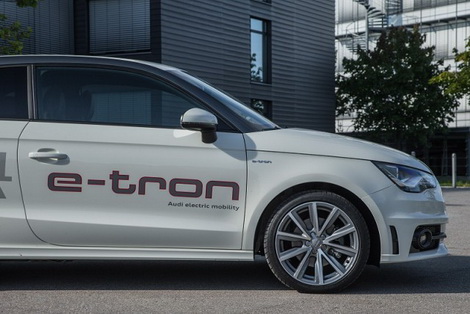It doesn't seem like all too long ago that a Jetsons-like car future was being sold to us by a highly-optimistic ESB (now Electric Ireland), predicting that a whopping 10 per cent of all cars on our roads would be electric by 2020. To say that we, as a nation of potential EV buyers, are lagging behind, would be somewhat of an understatement. In all of 2014, just 221 of the 96,343 new cars registered were in fact electrically powered - an additional 25 more were plug-in hybrids. Granted it's an improvement over the measly 49 electric cars registered in 2013, but it still made up just 0.23 per cent of overall sales.
So why aren't more people buying electric vehicles at a time when battery performance is improving? Well, for starters, there are no real incentives beyond the SEAI grants, which help soften the blow of what are still very high initial purchase prices in relation to conventionally powered cars. Then there are the logistics. For most people, simply getting in the car doesn't require a great deal of planning. But, in an EV, if you're planning to do any significant distance, especially any involving motorway miles, then it's not long before you're into military-like planning, involving routes and potential stop-off points for re-charging. This last point is where we seem to fall down the most.
First, I should point out that Electric Ireland has done a reasonably good job over the last 18 months of rolling out additional public charging points, while many retailers such as Tesco have installed points in their own car parks. In fact, per electric vehicle on the road, Ireland probably has one of the best charge-point-to-car ratios in Europe. Unfortunately, we also have one of the highest ignorance-to-electric-vehicles ratios in Europe, especially towards charging points.
Allow me to explain. I recently spent a week driving the new Volkswagen e-Golf. It's one of the more impressive electric vehicles I've driven, mainly due to just how normal it is. Its driving range of around 140 kilometres is reasonably good when you are mainly an urban driver, as I am. However, a journey into Dublin city centre on a Sunday afternoon left me feeling frustrated. I had planned on parking up and charging the car while I went for a coffee. I didn't necessarily need to charge the car, as I had done so at home and easily had enough battery power to get me back again; it was more a case of trying to get into the whole EV experience.
I found myself driving from public charge point to public charge point only to find each and every one fully occupied by non-electric vehicles, despite the presence of a clearly identifiable (and LED illuminated) charging station. It was after I drove to the fifth fully occupied charging point that I decided to give up and park up without recharging the car.
Even though I found it annoying, thankfully I wasn't desperately in search of electricity, but had I been I would have been royally screwed. I asked Dublin City Council and Electric Ireland via Twitter what is the point of having these stations when EV users cannot access them and I received no answer. It would seem that, although it is illegal to park in a disabled space without displaying the correct permit (usually resulting in having your car promptly towed away), hindering the further mobility of an EV user is perfectly fine.
As Benjamin Franklin once said: "By failing to prepare, you are preparing to fail." If the Irish government were in any way serious about trying to promote the use of so-called 'more environmentally friendly' vehicles like EVs, then something needs to be done to make it appealing to own one. I'm not suggesting any kind of preferential treatment, but just some more forethought into the planning process rather than simply coming up with grandiose pie-in-the-sky ideas about our future mobility. As it stands now, it will remain just a dedicated few who choose to invest in an electric future.

